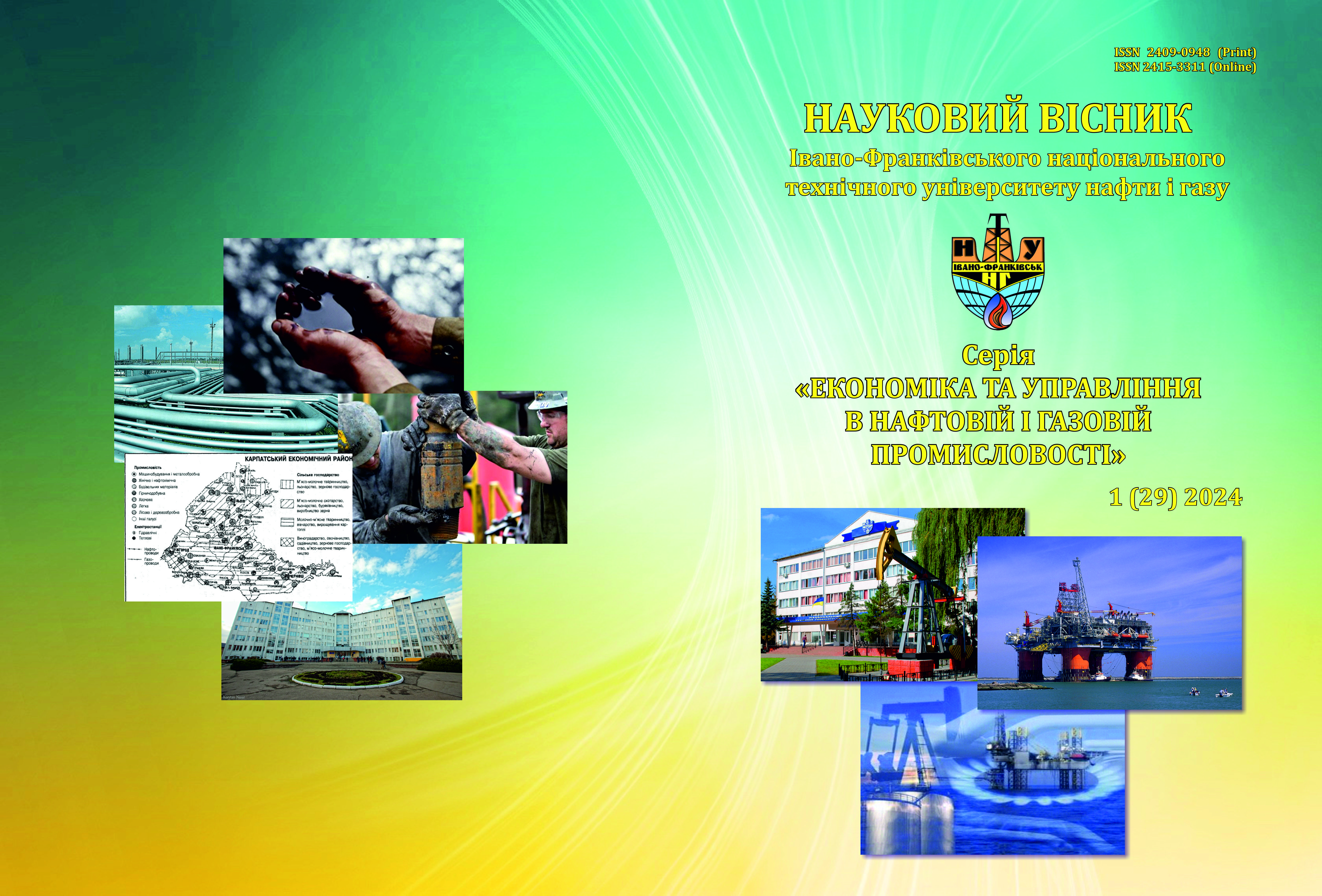METHODOLOGICAL APPROACHES TO COMPETITIVENESS ASSESSMENT BUSINESS ENTITIES
DOI:
https://doi.org/10.31471/2409-0948-2024-1(29)-152-163Keywords:
competitiveness, methodical approaches, business entity, advantages, integrated systems.Abstract
The purpose of the article is to substantiate the theoretical and methodological principles and develop practical recommendations for the formation and improvement of the competitive advantages of economic entities using factor analysis. This method makes it possible to identify key factors that affect the competitiveness of economic entities, as well as to determine their importance. The article highlights the theoretical foundations of the formation of competitive advantages of economic entities. It has been established that assessing the competitiveness of business entities is an important stage in business management. Competitiveness is determined by the ability of business entities to compete effectively on the market, providing high quality products or services, competitive prices, innovative solutions and excellent customer service.
Methodical approaches to managing the competitiveness of economic entities have been formed, which will allow them to understand and determine their competitive advantages and disadvantages, as well as to develop a strategy to increase their competitiveness in the market. The organizational and economic measures to increase the competitive advantages of the business entities of the complex are substantiated. It is substantiated that the integrated corporate structure aims to create favorable conditions for increasing the competitiveness of economic entities by optimizing internal business processes, resources and management. The proposed theoretical directions make it possible to draw more reasonable conclusions about the state of competitiveness of economic entities and will contribute to the adoption of managerial decisions regarding the improvement of certain aspects of their activity. The analysis of the obtained results will allow to identify problem areas, to determine the priority areas of development and to develop specific measures for their solution. Thus, research helps business entities to focus on key aspects of their activities and achieve effective results in a competitive environment.
References
Воловодюк С. С. Забезпечення конкурентоспроможності будівельного комплексу на принципах превентивності. Науковий вісник Івано-Франківського національного технічного університету нафти і газу. 2016. Вип. 2(14). С. 103–109.
Кобиляцький Л.С. Управління конкурентоспроможністю. − К.: Зовнішня торгівля, 2003. − 302 с.
Тарнавська Н. П. Управління конкурентоспроможністю субє’ктів господарювання: теорія, методологія, практика: Монографія. Тернопіль: Економічна думка, 2008. 506 с.
Янковий О.Г. Конкурентоспроможність субє’ктів господарюванняа: оцінка рівня та напрями підвищення: Монографія. Одеса: Атлант, 2013. 470 с.
Andrusiv, U. Ya. Methods of competitiveness assessment of agricultural enterprise in Еastern Europe. Regional Science Inquiry, Vol. IX, (2), 2017, pp. 231-242.
Довгаль О.В. Забезпечення конкурентоспроможності субє’ктів господарювання на принципах превентивності. “Обліково-аналітичне і фінансове забезпечення діяльності суб’єктів господарювання: освітньо-наукові та виробничі засади” матеріали ІІ Міжнародної науково-практичної конференції, 23-24 грудня 2017 р. м. Миколаїв: 2017. С.241-243.
Андрусів У. Я. Бенчмаркінг в системі контролінгу як дієвий інструмент регіонального розвитку. Цифрова економіка: тренди та перспективи : матер. Міжнародної наук-практ.конф. [Тернопіль, 25 жовтня 2018 р.]. Тернопіль: 2018.- с.38-40.
Karlan, D., Osei, R., Osei-Akoto, I. and Udry, C. (2014) ‘Agricultural decisions after relaxing credit and risk constraints’, The Quarterly Journal of Economics. MIT Press, 129(2), pp. 597–652.
Andrieu, N., Sogoba, B., Zougmore, R., Howland, F., Samake, O., Bonilla-Findji, O., Lizarazo, M., Nowak, A., Dembele, C. and Corner-Dolloff, C. (2017) ‘Prioritizing investments for climate-smart agriculture: Lessons learned from Mali’, Agricultural Systems. Elsevier, 154, pp. 13–24.
Downloads
Published
How to Cite
Issue
Section
License
Copyright and Licensing Terms
Copyright Statement
The authors who publish in the journal accept the following conditions:
- The authors retain the copyright and grant the journal the right of first publication, licensed with Creative CommonsCC BY-NC-SA , which permits other people to remix, transform, and build upon the material and use the material for non-commercial purposes, give appropriate credit and distribute the contributions under the same license as the original.
- The authors can conclude additional agreements on the non-exclusive distribution of the journal’s published version of the work (for example, publication of the work in electronic repositories) with an acknowledgment of its initial publication in this journal.
- The authors can upload the published articles on the Internet (for example, in electronic repositories or on web-sites), as it will stimulate fruitful scholarly discussions and increase the citation rates of the published articles.


1.png)


1.png)





